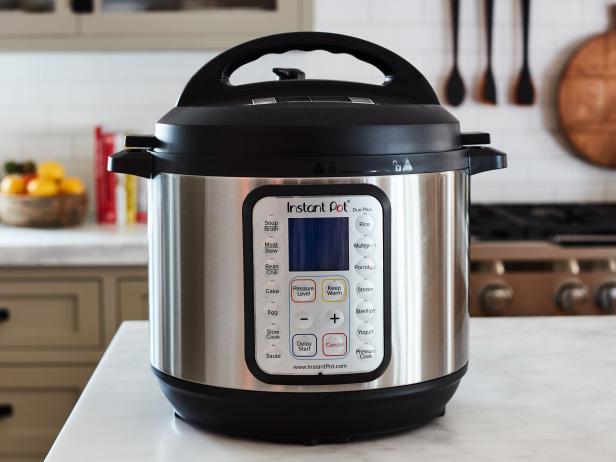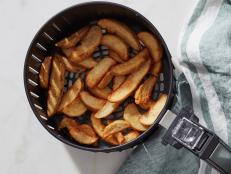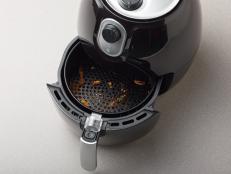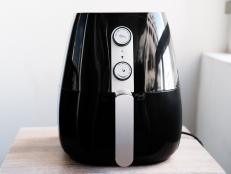How to Make Recipes Work in an Instant Pot and Slow Cooker
Convert recipes to your preferred cooking method with these tips.

Matt Armendariz
By Leah Brickley for Food Network Kitchen
Chances are you own a slow cooker, Instant Pot or both — and are pretty devoted to one or the other. If you find yourself wishing you could make the recipes you love using either appliance, we’ve got good news for you. It’s (for the most part) possible! Ready to experiment? With some forethought and planning you can convert a slow cooker recipe to an Instant Pot version and vice versa. Below are some guidelines for success, however, there will be a learning curve: Make your first attempt a low-key weekend experiment (or weeknight family dinner if you have open-minded diners) and not a major holiday. It may take a couple rounds to get it just right.
How to Convert a Recipe for an Instant Pot or Slow Cooker
Before you get started, read through the recipe you want to convert very carefully. Consider the following factors and adjust as necessary.
Liquid:
A slow cooker doesn’t need much liquid. Ingredients simmer for 6 to 8 hours and release moisture, contributing to the total volume. Unless you're slow-cooking a soup or stew, only 1 cup of liquid is necessary. Instant Pot recipes will need more liquid, or you run this risk of scorching the bottom of the insert.
- Slow Cooker to Instant Pot: Add up the total amount of liquid (broth, water, canned tomatoes etc.) and plan to double or triple it in the Instant Pot.
- Instant Pot to Slow Cooker: Lower the liquid so there is only about 1 cup (except for soups and stews). Try to maintain original ratios of the liquid ingredients, which will require some math. Just do your best — this doesn't have to be exact.
Volume:
A slow cooker is like a bathtub compared to an Instant Pot — a six-quart oval slow cooker can hold a lot more food than a round six-quart Instant Pot, because you can't fill an Instant Pot to the brim. Start with a calculator and then use a casual eyeball to help scale recipes successfully.
- Slow Cooker to Instant Pot: Scale down — the Instant Pot should not be filled more than two-thirds of its total capacity.
- Instant Pot to Slow Cooker: Scale up — depending on the recipe you may need to double or triple the ingredients (except liquid for any non-soup or stew recipe) .

Matt Armendariz
Adding Ingredients:
Slow-cooker recipes usually require an easy dump-and-stir, while the different settings on an Instant Pot — like saute, for example — allow for ingredients to be added in stages. Consider the following:
- Slow Cooker to Instant Pot: The biggest benefit of using the Instant Pot settings here is with meats. You can brown any meats right in the Instant Pot as opposed to on the stove like you might with a slow-cooker recipe. However, when it comes to other ingredients, this may be tricky. Think about each ingredient first: a hunk of carrot will likely take longer to cook than a softer piece of onion. If you're adding ingredients in stages, then start with the harder pieces first and saute until crisp-tender.
- Instant Pot to Slow Cooker: Your ingredients are going to start and end cooking all at the same time — so they should be the same size. Disregard some of the prep instructions in your Instant Pot recipe and cut everything into relatively the same size instead — anywhere from 1- to 2-inch pieces depending on the recipe. If the Instant Pot recipe calls for meat to be left whole, do the same for the slow cooker conversion; otherwise, cut meat into 1- to 2-inch pieces as well.
Shop Our Favorite Models
Time:
A slow cooker is designed to cook for 6 to 8 hours, while the Instant Pot is, well, instant (OK, faster). Meat is the major ingredient that will be affected by time. Below are some guidelines to consider:
- Slow Cooker to Instant Pot: Fatty, tough cuts of meat are perfect in a slow cooker, so you'll probably need to consider longer cooking times when converting to an Instant Pot. Luckily, there is a very comprehensive guide to help with time questions — everything from meat and veggies to grains.
- Instant Pot to Slow Cooker: Leaner cuts of meat like chicken breast will end up dry and stringy in a slow cooker. Consider these swaps: Pork butt or shoulder for loin or tenderloin; chicken thighs instead of breasts; beef chuck roast, brisket or trip tip instead of sirloin, flank or tenderloin. As for time, use the slow cooker as intended and set for 6 to 8 hours depending on the recipe.
Other Things to Consider
Macaroni and Cheese: It's beautiful when made in an Instant Pot but will end up a broken, clumpy mess in a slow cooker. It’s best not to convert from Instant Pot to slow cooker.
A Word on Alcohol: A slow cooker has the advantage of venting over a long period of time so alcohol will ultimately cook off. The same is not true for an Instant Pot — and residual alcohol could leave food bitter. Try using lemon juice, vinegar or even broth in place of wine or booze.
Be sure to document all your changes all the way. Once you've mastered the new recipe, type it up and share with friends and family!



































































